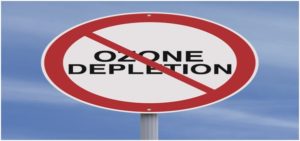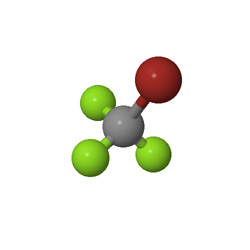What are Ozone Depleting Substances? Are Ozone Depleting Substances Dangerous?
Ozone Depleting Substances Can Become Serious Issues;
 What are ozone depleting substances?As we all know that, the Ozone gas layer exhibit in our environment assumes an exceptionally basic part in all chemicals and natural process in our planet. Ozone filter through the majority of the exceptionally destructive bright beams from the sun and keeps radiation from achieving the world’s surface. Despite the fact that, the levels of Ozone in the environment actually rise and fall contingent upon components, for example, height, temperature, and climate, a huge measure of ozone lost as of late can’t be ascribed to regular variables alone. And, the human made chemicals and gases can found as most responsible components for the depletion of the ozone layer.
What are ozone depleting substances?As we all know that, the Ozone gas layer exhibit in our environment assumes an exceptionally basic part in all chemicals and natural process in our planet. Ozone filter through the majority of the exceptionally destructive bright beams from the sun and keeps radiation from achieving the world’s surface. Despite the fact that, the levels of Ozone in the environment actually rise and fall contingent upon components, for example, height, temperature, and climate, a huge measure of ozone lost as of late can’t be ascribed to regular variables alone. And, the human made chemicals and gases can found as most responsible components for the depletion of the ozone layer.
Ozone depletion;
is a term used to portray two related phenomena concerning the world’s ozone layer. The first is the moderate and consistent decay of the measure of ozone in the world’s upper environment at a rate of around 3 percent for each decade. The second is the bigger, but regular abatement in the level of  ozone in the air, particularly in the world’s Polar Regions, usually called an ozone hole. There is a very long list of the components considered as Ozone depleting substances, which contains fluorine, chlorine, bromine, hydrogen and carbon in changing extents and are regularly portrayed by the general term Halo carbons. Except that, there are so many human-made substances also, that are used to operate different machines or applications. Some of these substances are given below.
ozone in the air, particularly in the world’s Polar Regions, usually called an ozone hole. There is a very long list of the components considered as Ozone depleting substances, which contains fluorine, chlorine, bromine, hydrogen and carbon in changing extents and are regularly portrayed by the general term Halo carbons. Except that, there are so many human-made substances also, that are used to operate different machines or applications. Some of these substances are given below.
Chlorofluorocarbons;
These are those substances that contain one, a few carbon molecules and no less than one particle each of fluorine and chlorine. CFCs were initially created in the 1920s to supplant sulfur dioxide as a coolant gas.
Hydro-chlorofluorocarbons;
A group of human made chemical substances contain one, a few carbon molecules and no less than one atom each of chlorine, hydrogen and fluorine. The hydrogen makes them less steady and thusly less harming to the ozone layer. These are for the most part utilized for refrigeration, foam blowing and cooling, solvent cleaning and to a lesser degree, fire protection and aerosols.
Bromochloromethan;
Bromochloromethane is a synthetic substance that contains bromine, chlorine, carbon and hydrogen. It is otherwise called Halon 1011 or Chlorobromomethane.
Halons;
These chemical substances mix containing chlorine, bromine, fluorine or carbon in its structure. These  are exceptionally viable for extinguishing fires. They don’t leave a strong deposit and are not a risk to individuals when utilized at the suggested focuses. The consolidated attributes of Halons make them appropriate for a wide range of flame smothering hardware, extending from modern/business add up to flooding gear to the handheld fire extinguishers well known for office and home utilize.
are exceptionally viable for extinguishing fires. They don’t leave a strong deposit and are not a risk to individuals when utilized at the suggested focuses. The consolidated attributes of Halons make them appropriate for a wide range of flame smothering hardware, extending from modern/business add up to flooding gear to the handheld fire extinguishers well known for office and home utilize.
Carbon Tetrachloride;
It is a compound substance comprising of one carbon molecule and four chlorine atoms. It was generally utilized as a crude material in the generation of CFCs. Littler amounts of carbon tetrachloride were utilized as a part of fire extinguishers, as an ingredient in pesticides, as a dry cleaning agent, paints pharmaceuticals and solvents.
Methyl Bromide;
Methyl bromide is a compound substance containing bromine, hydrogen and carbon, and is an essential reason of ozone depletion. This substance has a wide assortment of farming uses as a fumigant. It is utilized for soil fumigation and fumigation of some nourishment generation offices.
Since 2010, Dust Chasers has offered quality air duct cleaning services in greater Toronto area, If you are in the market to improve indoor air quality feel free to call us toll free for a consultation at 18556873878 Extension 701.
Feel free to check out our Duct Cleaning Blog for more content in regards of how to improve indoor air quality at your home or office.